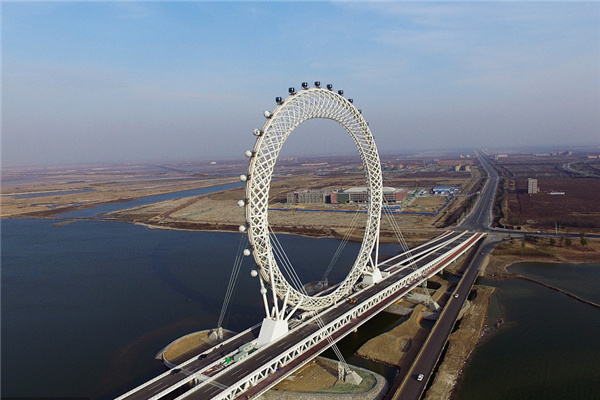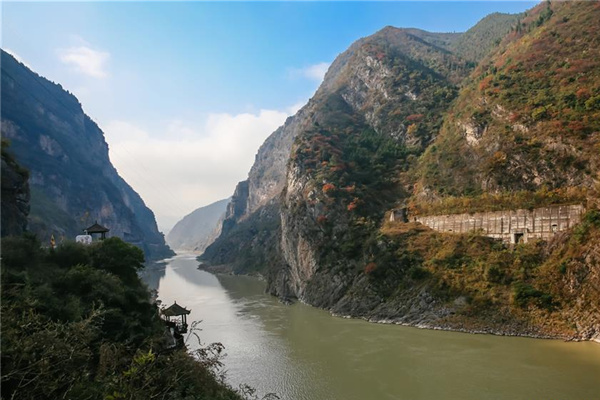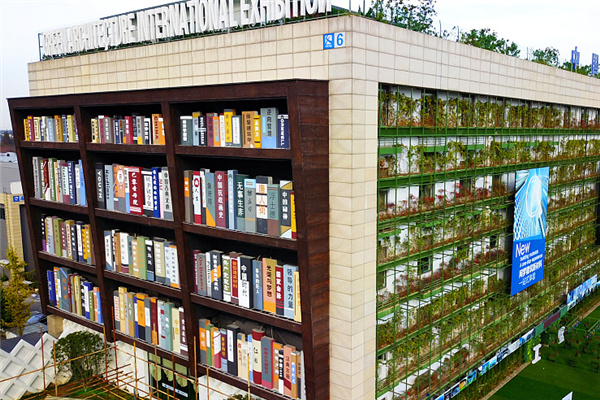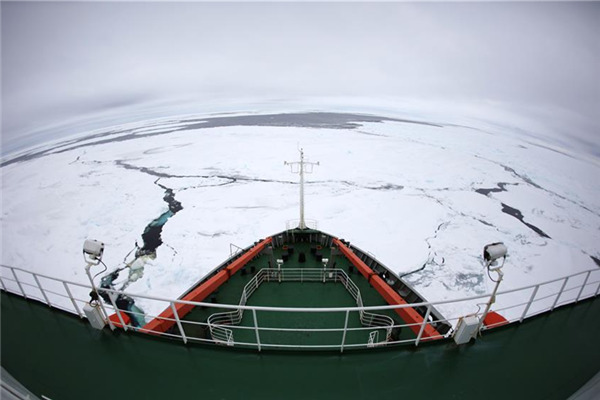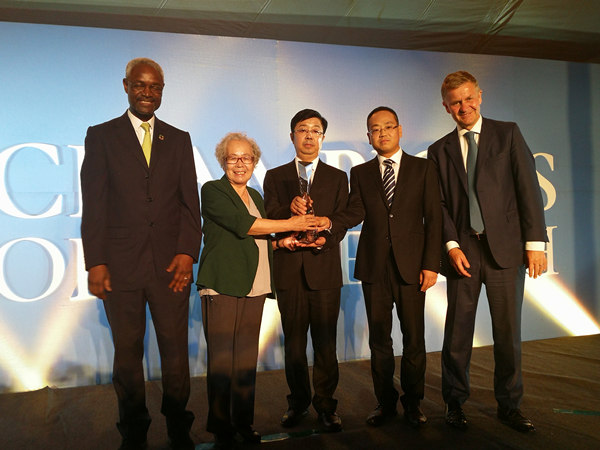

|
A bird view of the largest wastewater treatment plant in Wuxi. |
Taking a hard lesson from the blue-green algae outbreak on 2,400 sq km Taihu Lake in East China last year, the Wuxi municipal government has mounted the most intensive efforts ever taken in the nation to combat wastewater hazards.
The program involves massive investments in upgrading the wastewater treatment capacity to achieve results that are equal to or better than the national standards. Because the cost and technological challenges are so high, it has never been tried in any other area of the country.
Upon completion of the treatment facilities, Wuxi will become the first city in China to improve its treated wastewater quality from the current B-level to an A-level under the newly issued DB32 standard, which is a tougher regional benchmark that limits pollutant discharge by wastewater treatment plants and key industries in the Taihu Lake area. The Taihu Lake is China's third largest freshwater lake, where in spite of 10 years of treatment that cost billions of yuan, the pollution continues to worsen
The total cost of the Wuxi project has not been specified, but the main part of it, which targets the largest sewage plant in the city, has been estimated at over 100 million yuan, says the municipal sewage treatment company.
The upgrade is currently under way in three major plants that treat 70 percent of the city's sewage. On completion, it will raise their treatment capacity by 250,000 tons from the current 350,000 tons per day collectively.
"Effluents from the three plants will meet the new standard when the project is completed by the end of this year," says Chen Yu, project manager from the sewage treatment company. "Major pollutants like COD, ammonia nitrogen and phosphorous will be reduced further so that pollution risks are minimized."
In what is called the aerobic biological treatment system - a method that consumes suspended and dissolved organic materials during the metabolic reaction of microorganisms.
After the treatment, the level of COD concentration will be reduced from the current 60 to 50-mg/liter, while ammonia nitrogen will be reduced from 15 to 8 mg/liter under a water temperature below 12 centigrade, said Chen.
The new system can also reduce the content of phosphorous from 1 to 0.5 mg/liter, by adding chemical compounds like Poly-Aluminum Chloride, a polymer used in water treatment.
As the largest sewage disposal plant in Wuxi with a daily capacity of 20 tons, Lucun factory says it will import a 195,000 m3 /d rotary disc filter and a 5000 m3 /d membrane filter to further remove suspended substances as well as the residual activated sludge left from the previous biological treatment processes. Both the filters have very small apertures that can retain particles when the water flows through.
"The membrane's aperture is only 0.04 microns, which means wastewater coming out of it can be safely reused," says Chen, citing irrigation as an example, although he was quick to add that the filter system's cost is very high.
A 10,000 m3 /d rotary disc filter is priced at 20 million yuan, while that for the membrane filter can be twice the cost, he says.
Rising treatment costs, however, will not push up wastewater treatment fees in the short term, says Qiao Wuwei, deputy director at the sewage treatment company. "Fees will remain stable at the current 1.1 yuan/ton out of the 2.5 yuan/ton charged for the use of tap water." But he added that prices might rise next year since it is far from enough to cover the costs.
"In the long run, we believe the increase of fees will help raise people's awareness of water preservation," Qiao says.
According to He Renjie, the company's deputy general manager, there are now 21 wastewater treatment plants in the city's seven districts, and the coverage rate of sewer pipes in the city property has reached 75 percent.
"Sewer pipes of the three major plants now extend more than 600 kilometers. In the following three years it will be stretched further by 450 kilometers," He says.
However, the expansion of sewage pipes alone is not enough, said Wu Jun, deputy director at Environmental Protection Science and Technology R&D Center in Yixing, a county-level city within Wuxi. He champions the construction of industrial parks where a centralized wastewater treatment system can minimize environmental hazards.
"Urban wastewater treatment plants are designed for treating domestic sewage," Wu says. "The inflow of industrial effluents that contain high degrees of pollutants like heavy metals will impair the performance of microorganisms."
Chen Jianping, director at the pollution control division of the municipal environmental protection bureau, agrees. "A centralized wastewater treatment system can ensure better effluent quality and reduce costs as well," Chen says. "That's why the city has been encouraging companies to move into industrial parks both for environmental protection and their future development."
(China Daily 03/24/2008 page3)


